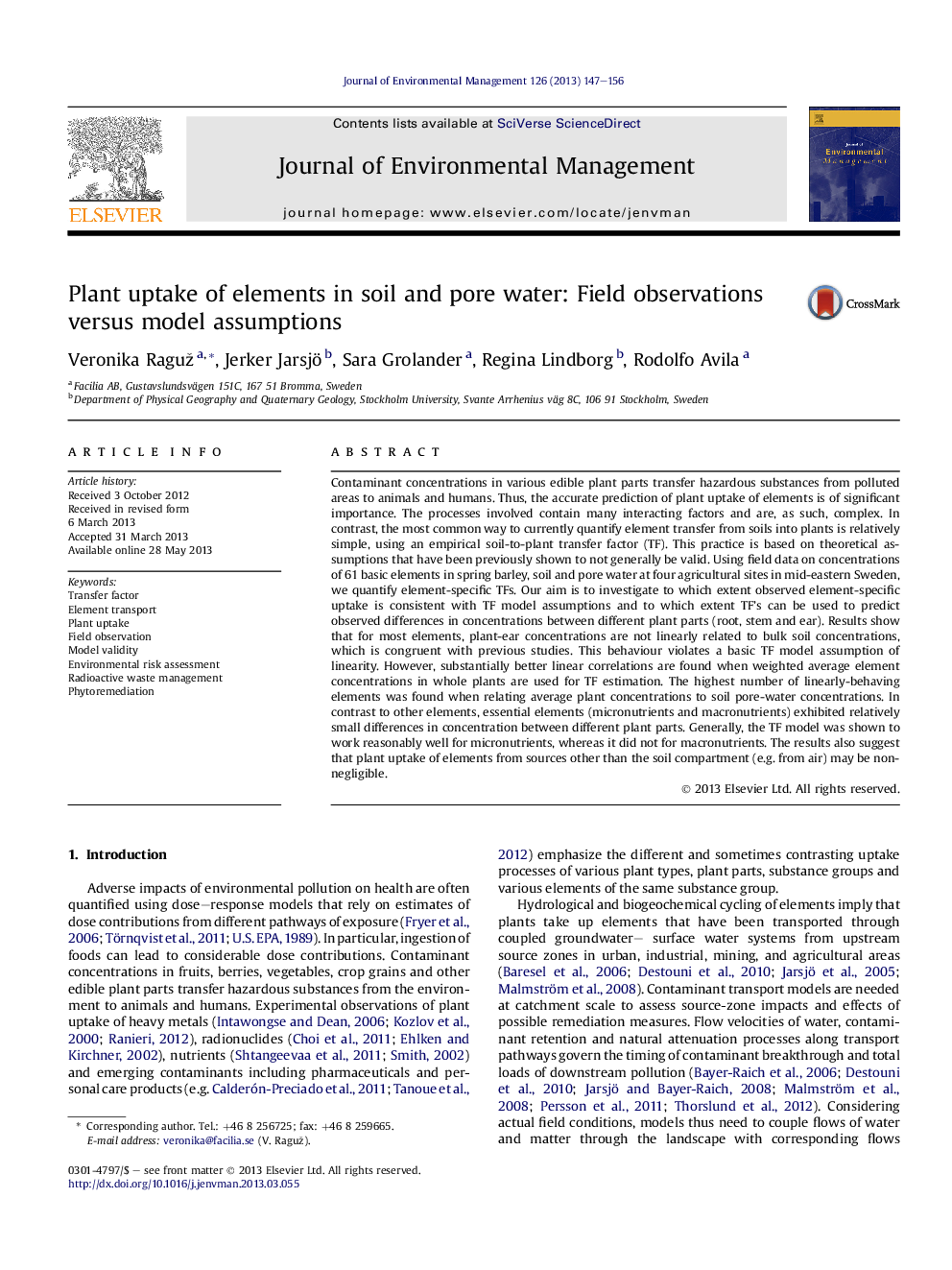| Article ID | Journal | Published Year | Pages | File Type |
|---|---|---|---|---|
| 7484350 | Journal of Environmental Management | 2013 | 10 Pages |
Abstract
Contaminant concentrations in various edible plant parts transfer hazardous substances from polluted areas to animals and humans. Thus, the accurate prediction of plant uptake of elements is of significant importance. The processes involved contain many interacting factors and are, as such, complex. In contrast, the most common way to currently quantify element transfer from soils into plants is relatively simple, using an empirical soil-to-plant transfer factor (TF). This practice is based on theoretical assumptions that have been previously shown to not generally be valid. Using field data on concentrations of 61 basic elements in spring barley, soil and pore water at four agricultural sites in mid-eastern Sweden, we quantify element-specific TFs. Our aim is to investigate to which extent observed element-specific uptake is consistent with TF model assumptions and to which extent TF's can be used to predict observed differences in concentrations between different plant parts (root, stem and ear). Results show that for most elements, plant-ear concentrations are not linearly related to bulk soil concentrations, which is congruent with previous studies. This behaviour violates a basic TF model assumption of linearity. However, substantially better linear correlations are found when weighted average element concentrations in whole plants are used for TF estimation. The highest number of linearly-behaving elements was found when relating average plant concentrations to soil pore-water concentrations. In contrast to other elements, essential elements (micronutrients and macronutrients) exhibited relatively small differences in concentration between different plant parts. Generally, the TF model was shown to work reasonably well for micronutrients, whereas it did not for macronutrients. The results also suggest that plant uptake of elements from sources other than the soil compartment (e.g. from air) may be non-negligible.
Keywords
Related Topics
Physical Sciences and Engineering
Energy
Renewable Energy, Sustainability and the Environment
Authors
Veronika Raguž, Jerker Jarsjö, Sara Grolander, Regina Lindborg, Rodolfo Avila,
